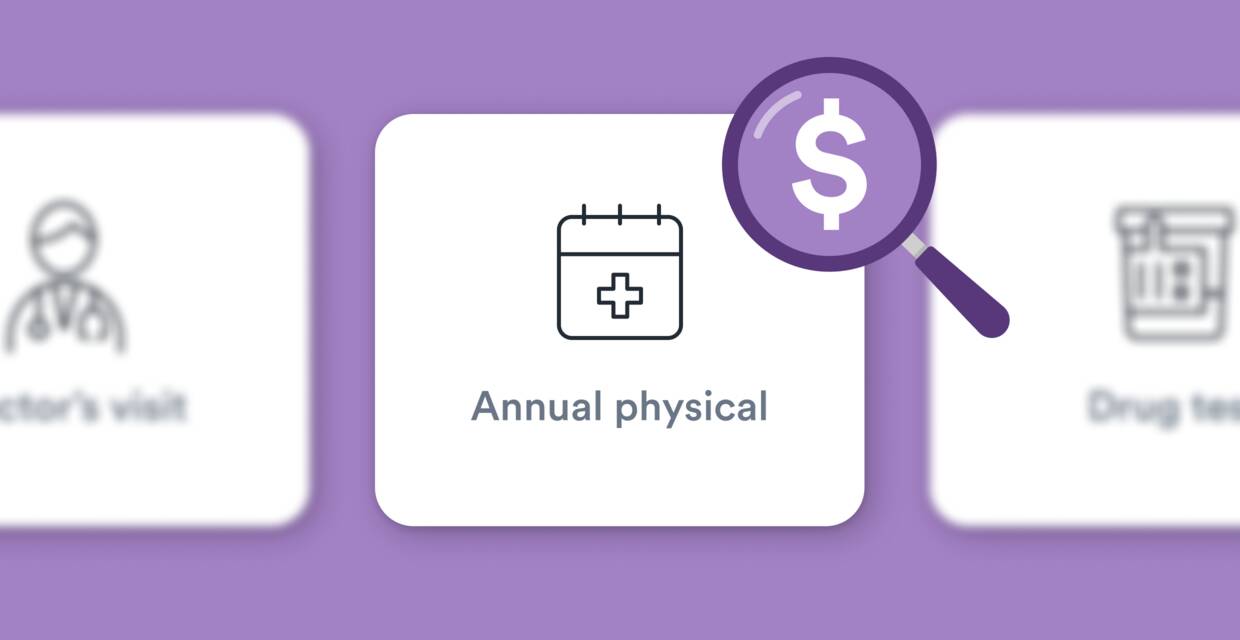

Finance
How Much Is A Hysterectomy Without Insurance?
Published: November 6, 2023
Discover the cost of a hysterectomy without insurance and how it can impact your finances. Find out the options available for financing this procedure.
(Many of the links in this article redirect to a specific reviewed product. Your purchase of these products through affiliate links helps to generate commission for LiveWell, at no extra cost. Learn more)
Table of Contents
Introduction
A hysterectomy is a surgical procedure performed to remove a woman’s uterus. It is often done to treat various conditions such as uterine fibroids, endometriosis, pelvic inflammatory disease, and certain types of cancer. While health insurance plans typically cover the cost of a hysterectomy, not everyone has access to insurance coverage. In such cases, individuals must bear the financial responsibility of the procedure themselves. This article aims to provide information on the cost of a hysterectomy without insurance and explore some low-cost options and financing alternatives that can help make the procedure more affordable.
Before delving into the cost aspect, it is important to note that deciding to undergo a hysterectomy is a significant medical decision that should be made in consultation with a healthcare professional. A thorough evaluation of the individual’s health condition, alternative treatment options, risks, and benefits is crucial to ensure an informed decision that aligns with the patient’s specific needs and circumstances.
Once the decision to proceed with a hysterectomy is made, understanding the potential costs becomes essential. Without insurance coverage, the cost of a hysterectomy can vary based on several factors, including the surgeon’s fees, the type of hysterectomy performed, the location of the procedure, and additional expenses such as pre-operative tests and post-operative care.
The cost of a hysterectomy without insurance can range anywhere from a few thousand dollars to tens of thousands of dollars, depending on these factors. It is important to note that these figures are general estimates and can vary significantly from one healthcare provider to another and from one geographic area to another.
Factors that Affect the Cost of a Hysterectomy without Insurance
Several factors influence the cost of a hysterectomy without insurance. Understanding these factors can help individuals better navigate and plan for the financial aspects of the procedure. Here are some key factors to consider:
- Type of Hysterectomy: The type of hysterectomy performed plays a significant role in determining the cost. There are different types of hysterectomy, including total hysterectomy, subtotal hysterectomy, and radical hysterectomy. Each type involves varying complexities and surgical techniques, which can impact the overall cost.
- Surgeon’s Fees: The fees charged by the surgeon for performing the hysterectomy can vary significantly. Factors such as the surgeon’s experience, reputation, and geographical location can influence the fees. It is essential to obtain a detailed breakdown of the surgeon’s fees during the consultation process.
- Hospital or Surgical Facility Fees: The cost of using a hospital or surgical facility for the procedure is another significant factor. Different hospitals may have varying fee structures and pricing models. It is important to inquire about these fees and any additional charges such as operating room fees, anesthesia fees, and recovery room fees.
- Diagnostic Tests and Pre-operative Expenses: Prior to a hysterectomy, certain diagnostic tests and evaluations may be necessary. These can include pelvic ultrasounds, blood tests, and consultations with specialists. These pre-operative expenses should be considered when estimating the overall cost.
- Post-operative Care and Follow-up: After the hysterectomy, there may be additional costs associated with post-operative care and follow-up visits. Medications, follow-up consultations, and any further treatments or procedures may incur additional expenses.
- Geographic Location: The cost of healthcare services can vary depending on the geographic location. Procedures performed in metropolitan areas, for example, may be more expensive compared to those in rural areas.
It is essential to consult with healthcare providers and hospitals to obtain accurate cost estimates based on these factors. Keep in mind that costs can change over time, so it is important to inquire about up-to-date pricing information.
Average Cost of a Hysterectomy without Insurance
The cost of a hysterectomy without insurance can vary widely depending on the factors mentioned earlier. While it is challenging to provide an exact figure, we can provide a general range based on available data and estimates.
On average, a hysterectomy without insurance can range from $10,000 to $20,000 or more. However, it is important to note that this is a rough estimate and the actual cost can be higher or lower based on individual circumstances and the factors discussed earlier.
The type of hysterectomy performed can significantly impact the cost. A total hysterectomy, which involves the removal of the uterus and cervix, is generally more expensive compared to a subtotal hysterectomy or removal of the uterus only. Similarly, a radical hysterectomy, often performed for cancer treatment, can be more complex and costly.
The fees charged by the surgeon can also vary. Highly experienced surgeons or those practicing in metropolitan areas may charge higher fees compared to those in smaller towns or with less experience. Likewise, the choice of hospital or surgical facility can influence the overall cost, with larger hospitals and specialized clinics typically charging higher fees.
Additional expenses such as pre-operative tests, anesthesia fees, hospital stay, and post-operative care can further contribute to the total cost. It is crucial to inquire about these additional expenses and factor them into the overall estimate.
Remember, these are average cost ranges and can vary significantly depending on individual circumstances. Obtaining detailed cost estimates from healthcare providers and facilities is essential to plan for the financial aspects of a hysterectomy without insurance.
Low-Cost Options for a Hysterectomy without Insurance
For individuals without insurance coverage, the cost of a hysterectomy can be a significant financial burden. However, there are several low-cost options available that can help make the procedure more affordable. Here are some alternatives to consider:
- Government Assistance Programs: In certain countries, there are government assistance programs that provide financial aid or reduced-cost healthcare services for individuals without insurance. These programs may have specific eligibility criteria, so it is important to research and inquire about any available options in your area.
- Charitable Organizations and Nonprofits: Some charitable organizations and nonprofits offer financial assistance or grants for medical procedures. These organizations aim to help individuals who are unable to afford the full cost of healthcare. Research locally based organizations and inquire about any available assistance programs.
- Sliding Scale Fees: Some healthcare facilities, particularly community health clinics or teaching hospitals, offer sliding scale fees based on income. This means that the cost of the procedure is adjusted according to an individual’s ability to pay. Inquire with healthcare providers to see if they offer such fee structures.
- Medical Tourism: Medical tourism involves traveling to another country to receive medical treatment at lower costs. Many countries offer high-quality medical services at a fraction of the cost compared to more expensive regions. However, it is crucial to thoroughly research the credentials of the healthcare provider and consider the additional costs associated with travel and accommodation.
- Negotiating with Healthcare Providers: It is worth exploring the option of negotiating with healthcare providers for a discounted rate or a payment plan. Some providers may be willing to work out a financial arrangement based on an individual’s circumstances.
It is important to note that while these options can help reduce the cost of a hysterectomy without insurance, it is essential to prioritize safety and quality of care. Thoroughly research and consider all aspects before making a decision.
Additionally, financial planning and budgeting can play a significant role in managing the cost of a hysterectomy. Saving in advance, utilizing healthcare savings accounts, and exploring other financial resources can help alleviate the financial burden associated with the procedure.
Remember to consult with healthcare professionals and financial experts to determine the best course of action and explore available options for low-cost or affordable hysterectomy options without insurance coverage.
Financing and Payment Plans for a Hysterectomy without Insurance
For individuals facing the cost of a hysterectomy without insurance, financing options and payment plans can provide financial relief by spreading out the payments over time. Here are some common options to consider:
- Healthcare Financing Companies: There are specialized healthcare financing companies that offer loans specifically for medical procedures. These loans can be used to cover the cost of a hysterectomy and are typically repaid over a fixed term with interest. Research different healthcare financing companies to find the best terms and rates that suit your needs.
- Personal Loans: Another option is to obtain a personal loan from a bank or other lending institutions. Personal loans can be used to cover medical expenses, including the cost of a hysterectomy. It is important to carefully review the terms, interest rates, and repayment options before committing to a personal loan.
- Hospital Payment Plans: Many hospitals offer payment plans to help individuals manage the cost of medical procedures. These plans allow patients to make monthly payments over an agreed-upon period. Inquire with the hospital’s billing department to explore the possibility of setting up a payment plan for your hysterectomy.
- Credit Cards: In some cases, individuals may choose to use credit cards to finance the cost of a hysterectomy. This option should be approached with caution, as credit cards typically have high interest rates. It is important to assess whether the interest payments will be manageable in the long run.
- Medical Credit Cards: Some financial institutions provide specialized medical credit cards that are specifically designed to cover healthcare expenses. These cards often offer promotional interest-free periods, making them a convenient option for managing the cost of a hysterectomy. However, it is crucial to carefully review the terms and conditions to avoid any unforeseen charges.
Prior to choosing a financing option or payment plan, it is crucial to evaluate your financial situation and determine how much you can comfortably afford to repay. Take into consideration factors such as interest rates, repayment terms, and any additional fees or charges associated with the chosen financing option.
When discussing payment options with healthcare providers or financing institutions, be proactive in negotiating terms that align with your financial circumstances. Some providers may be open to customizing payment plans or offering discounts for upfront payments. Remember to obtain all agreements and payment plans in writing to avoid any misunderstandings.
Financial planning and budgeting can go a long way in managing the cost of a hysterectomy without insurance. Exploring these financing options and payment plans can help individuals receive the necessary medical treatment while spreading out the financial burden over time.
Conclusion
Facing the cost of a hysterectomy without insurance can be daunting, but there are options available to make it more manageable. By understanding the factors that affect the cost, exploring low-cost alternatives, and considering financing and payment plans, individuals can navigate the financial aspect of the procedure with greater ease.
The average cost of a hysterectomy without insurance can range from $10,000 to $20,000 or more, depending on various factors such as the type of hysterectomy, surgeon’s fees, hospital or surgical facility fees, and additional expenses. It is important to obtain detailed cost estimates from healthcare providers to accurately plan for the financial aspects.
Low-cost options, such as government assistance programs, charitable organizations, sliding scale fees, and medical tourism, can provide financial assistance or reduced-cost healthcare services. Researching and inquiring about these options can help individuals find affordable alternatives for a hysterectomy.
Additionally, exploring financing options and payment plans can help spread out the cost over time. Healthcare financing companies, personal loans, hospital payment plans, and medical credit cards are potential avenues to consider. It is important to carefully review the terms and assess whether the repayment terms and interest rates are manageable in the long run.
Regardless of the chosen option, safety, quality of care, and thorough research should always be prioritized. Consulting with healthcare professionals and financial experts can provide valuable guidance and ensure informed decision-making.
Lastly, proactive financial planning and budgeting can help individuals better manage the cost of a hysterectomy without insurance. Saving in advance, utilizing healthcare savings accounts, and exploring other financial resources can ease the financial burden associated with the procedure.
It is important to remember that everyone’s financial situation is unique, and it is essential to assess individual circumstances and consider the available options. By being proactive, informed, and resourceful, individuals can navigate the cost of a hysterectomy without insurance while prioritizing their health and well-being.














